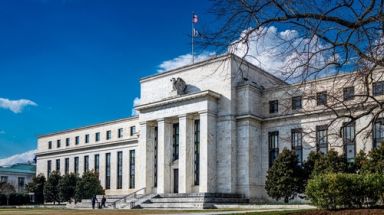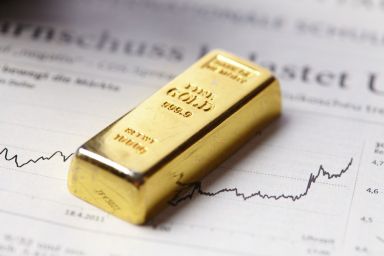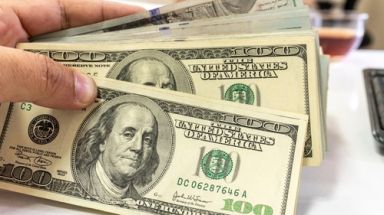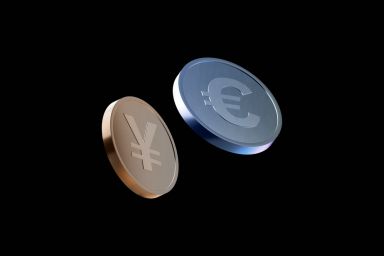Featured articles

Why Michael Burry just sold all his tech stocks
Michael Burry has just exited a nearly $100 million position on Nvidia that he opened earlier this year.
14:42, 9 October 2025

Gold forecast: Third-party price targets
Gold (XAU/USD) is currently trading at $3,982.94 (as of 6:12pm UTC, 7 October 2025), after briefly crossing $4,000 per ounce for the first time during the session.
14:43, 9 October 2025

How does Elon Musk impact cryptocurrency prices?
In cryptocurrency markets, few individuals command as much attention as Elon Musk. The CEO of Tesla and SpaceX’s tweets, Tesla and Dogecoin announcements, and public statements can trigger periods of heightened volatility, with shifts in buying and selling pressure across digital assets.
13:29, 30 September 2025

Diginex stock forecast: Third-party price targets
Diginex (DGNX) is trading at 10.44 in intraday action on 4 December 2025, within a session range of $9.35–$10.61 on Capital.com’s share CFD feed as of 10:12am (UTC).
08:39, 12 December 2025

A massive warning signal is flashing for the AI boom
Take a look at this chart. It shows that searches for the term AI bubble on Google have been surging recently.
17:16, 11 December 2025

Something BIG just broke in the bond market
Take a look at this chart. It tracks something called the global bond liquidity, which is a measure of how easily government bonds can be bought or sold without triggering a big price movement.
16:16, 11 December 2025

Renk stock forecast: Third-party price targets
Renk Group AG has remained in focus as traders track developments across the European defence sector and consider how recent company updates may be reflected in day-to-day price movements.
14:28, 11 December 2025

What are the top 5 most traded indices and why?
Global stock indices serve as key indicators of overall market performance, tracking the value of leading companies across major economies. Whether it’s the S&P 500, Dow Jones, Nasdaq-100, FTSE 100 or DAX 40, each index provides a distinct view of economic activity, sector dynamics and investor sentiment.
19:31, 11 December 2025

FOMC outlook boosts risk appetite, but was it too optimistic?
Markets welcome the Fed's policy outlook but concerns about complacency regarding inflation limit the upside in risk appetite
09:27, 11 December 2025

Market Mondays: Why a Hawkish Cut is still the Path of Least Regret
Markets tread with cautious heading into the Fed meeting this week, with focus on the revised projections into 2026.
10:57, 8 December 2025

Discover Newsquawk: your integrated in-platform newsfeed
News moves fast — and so do the markets. With Newsquawk integrated into Capital.com, you can explore real-time headlines, detailed reports and tailored updates directly where you trade.
08:23, 5 December 2025

Gold is sending a major economic warning
Gold prices have surged since mid August of this year, continuing an historic rally that began towards the end of 2023. Since then, gold prices have more than doubled.
15:50, 11 December 2025

Gold Awaits Fed Decision as Markets Brace for Crucial Policy Signals
Gold hovers around $4,200 ahead of the Federal Reserve meeting as traders await key insights.
10:34, 10 December 2025

Market Mondays: Why a Hawkish Cut is still the Path of Least Regret
Markets tread with cautious heading into the Fed meeting this week, with focus on the revised projections into 2026.
10:57, 8 December 2025

Discover Newsquawk: your integrated in-platform newsfeed
News moves fast — and so do the markets. With Newsquawk integrated into Capital.com, you can explore real-time headlines, detailed reports and tailored updates directly where you trade.
08:23, 5 December 2025

US Dollar Outlook: weakness driven by positioning, but the macro story isn’t broken
The US dollar faces downside pressure as positioning shifts post-FOMC meeting, but the structural drivers remain unchanged.
10:23, 12 December 2025

USD/TRY forecast 2026–2030: Third-party price targets
USD/TRY continues to react to shifts in Turkey’s economic outlook and wider global conditions, offering a clear view of how domestic and international factors interact across the currency market. Past performance is not a reliable indicator of future results.
16:07, 11 December 2025

FOMC outlook boosts risk appetite, but was it too optimistic?
Markets welcome the Fed's policy outlook but concerns about complacency regarding inflation limit the upside in risk appetite
09:27, 11 December 2025

EUR/JPY forecast: Third-party price targets
Euro / Japanese yen (EUR/JPY) is trading around 180.63 as of 1:26pm UTC on 4 December 2025, moving within an intraday range of 180.46–181.36 on Capital.com’s forex CFD feed. The pair continues to trade near levels seen around 181.3 in recent sessions, broadly in line with external spot benchmarks that have also held close to the 181 area. Past performance is not a reliable indicator of future results.
17:47, 10 December 2025

The Simpsons predicted XRP to hit $589: What’s behind the viral claim?
The link between The Simpsons and real-world events often resurfaces when online communities revisit past episodes for possible references or coincidences. XRP has recently been drawn into this discussion, leading some viewers to question whether the show ever hinted at a specific price level.
17:45, 12 December 2025

Bitcoin price prediction: Third-party outlook
Discover Bitcoin price projections 2025–2030 with third-party BTC forecasts, technical trends, price history, and CFD market sentiment.
16:44, 8 December 2025

Discover Newsquawk: your integrated in-platform newsfeed
News moves fast — and so do the markets. With Newsquawk integrated into Capital.com, you can explore real-time headlines, detailed reports and tailored updates directly where you trade.
08:23, 5 December 2025

Top crypto traders to follow by social media popularity in 2025
Influencers, analysts and developers use digital platforms to exchange ideas, interpret market trends and discuss the development of digital assets. As their audiences grow, these voices increasingly shape how information spreads and how trading discussions evolve across communities.
15:11, 1 December 2025
